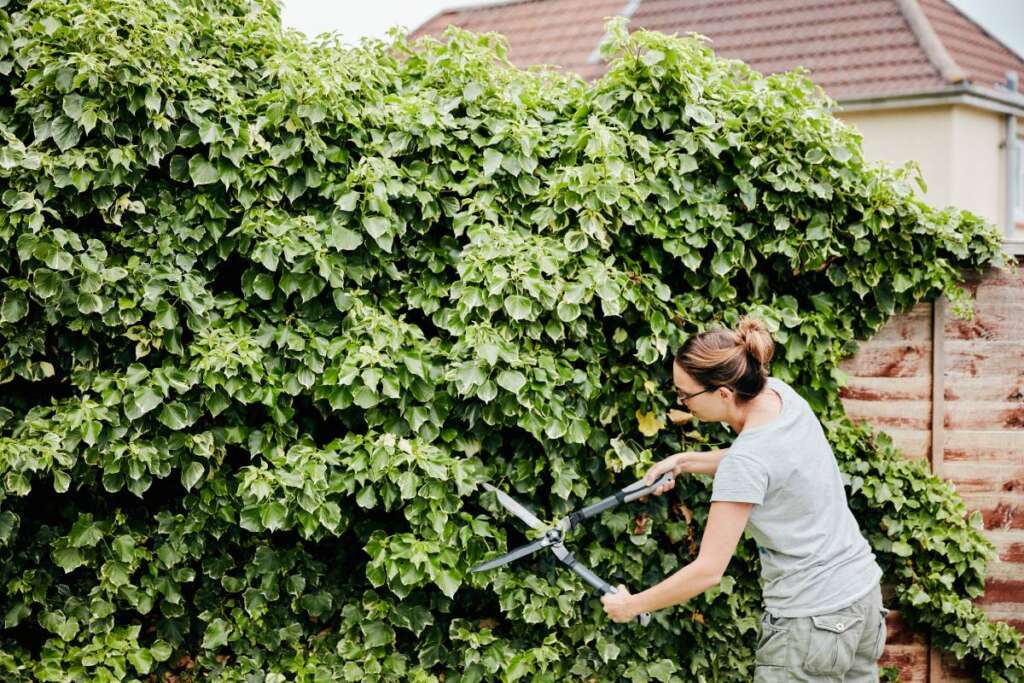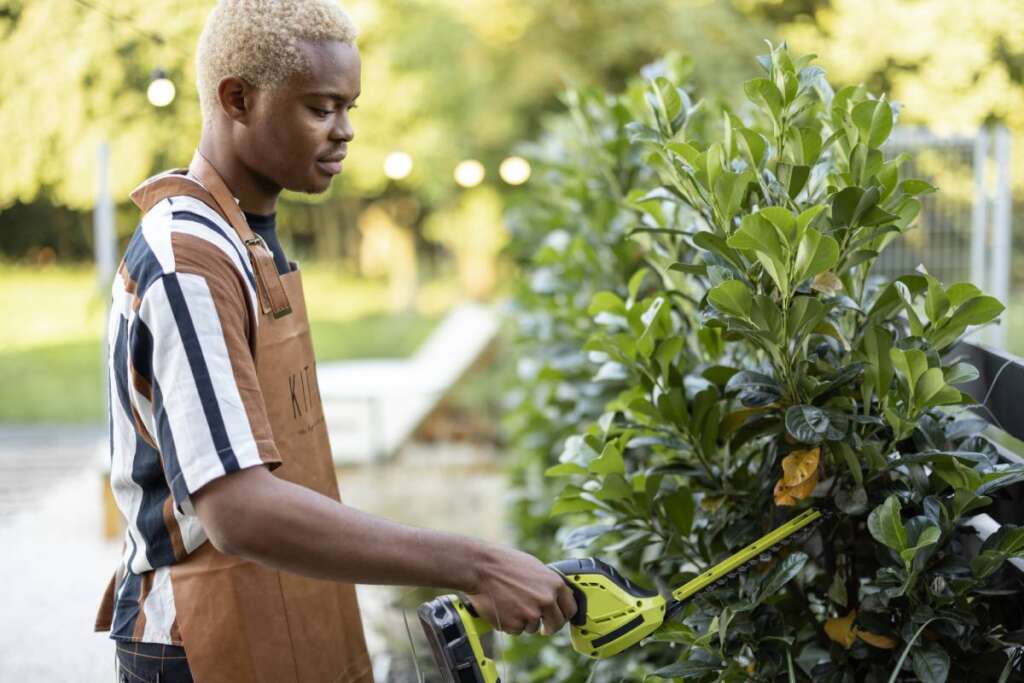Pruning hedges is an essential gardening practice that not only keeps your garden looking neat and tidy but also promotes healthy growth.
In Australia, the ideal timing for pruning hedges depends on several factors, including the type of hedge, your local climate, and the purpose of the pruning.
This guide will provide you with a comprehensive understanding of the best months to prune hedges in Australia, along with practical tips to ensure your hedges thrive.
Understanding Hedge Types and Growth Cycles
Before determining the ideal pruning time, it’s crucial to identify the type of hedge in your garden. Hedges in Australia can generally be classified into:
- Evergreen Hedges:
- Examples: Lilly Pilly, Boxwood, Viburnum, and Murraya.
- Characteristics: Retain their foliage year-round and require regular maintenance to maintain their shape.
- Deciduous Hedges:
- Examples: Beech, Hornbeam, and Japanese Maple.
- Characteristics: Lose their leaves in autumn and undergo a period of dormancy in winter.
- Flowering Hedges:
- Examples: Camellia, Lavender, and Hibiscus.
- Characteristics: Require careful pruning to ensure blooms are not sacrificed.
Each type of hedge has unique growth cycles, which dictate the optimal time for pruning.
Pruning Evergreen Hedges
Evergreen hedges are widely popular in Australia due to their lush foliage and year-round appeal. For these hedges:
- Best Pruning Months: Late spring (October to November) and late summer (February to March).
- Why? Pruning during these months aligns with their active growth periods, allowing them to recover quickly and maintain a dense, healthy appearance.
- Additional Tips:
- Avoid heavy pruning in winter as growth slows down, which may leave the hedge looking sparse for longer.
- Use sharp hedge trimmers to achieve clean cuts and minimise damage.

Pruning Deciduous Hedges
Deciduous hedges require pruning at specific times to encourage healthy regrowth and maintain their structure.
- Best Pruning Months: Winter (June to August) while the hedge is dormant.
- Why? Pruning during dormancy minimises stress on the plant and makes it easier to see the hedge’s structure without the foliage.
- Additional Tips:
- Conduct a light trim in late summer if the hedge looks untidy but save major pruning for winter.
- Always remove dead or diseased wood to promote healthy growth.
Pruning Flowering Hedges
For flowering hedges, timing is critical to ensure you don’t accidentally remove buds and compromise the bloom.
- Best Pruning Months:
- For spring-flowering hedges (e.g., Camellia): Prune immediately after flowering, usually late spring (November).
- For summer-flowering hedges (e.g., Hibiscus): Prune in early spring (September to October).
- Additional Tips:
- Deadhead spent flowers throughout the blooming season to encourage continuous flowering.
- Avoid pruning too late in the season as this may affect the next cycle of blooms.
Regional Climate Considerations
Australia’s diverse climate zones significantly impact the best time to prune hedges. Consider these regional guidelines:
- Tropical Regions (e.g., North Queensland):
- Best Pruning Months: Early dry season (May to July).
- Avoid pruning during the wet season as excessive humidity can promote fungal diseases.
- Subtropical Regions (e.g., Brisbane):
- Best Pruning Months: Spring (September to November) and early autumn (March).
- Regular light trimming can be done year-round due to consistent growth.
- Temperate Regions (e.g., Sydney, Melbourne):
- Best Pruning Months: Late winter (July to August) for deciduous hedges and late spring (October) for evergreen varieties.
- Be mindful of frost damage in late autumn and winter.
- Arid and Semi-Arid Regions (e.g., Alice Springs):
- Best Pruning Months: Autumn (April to May) and early spring (August to September) when temperatures are moderate.
- Ensure hedges are well-watered before and after pruning.
- Cool Temperate Regions (e.g., Tasmania):
- Best Pruning Months: Late winter (August) for deciduous hedges and early summer (December) for evergreen types.
- Avoid pruning in frost-prone months to protect new growth.

General Pruning Guidelines
Regardless of the hedge type or location, following these general guidelines will ensure successful pruning:
- Use the Right Tools:
- Invest in quality hedge trimmers, pruning shears, and loppers.
- Ensure tools are sharp and clean to prevent the spread of diseases.
- Follow the “One-Third Rule”:
- Avoid removing more than one-third of the hedge’s growth at a time to prevent undue stress.
- Shape Matters:
- Trim hedges slightly wider at the base than the top to allow sunlight to reach all parts of the plant.
- Regular Maintenance:
- Light trimming every 6 to 8 weeks during the growing season keeps hedges in shape and prevents overgrowth.
- Monitor for Pests and Diseases:
- Check hedges for signs of pests like aphids or diseases like powdery mildew. Early intervention is key.
Benefits of Pruning at the Right Time
Pruning hedges at the appropriate time offers several benefits:
- Enhanced Aesthetic Appeal:
- Proper pruning maintains a tidy and symmetrical appearance, boosting your garden’s overall look.
- Improved Plant Health:
- Removing dead or diseased branches reduces the risk of infestations and encourages vigorous growth.
- Optimised Flowering:
- Flowering hedges pruned at the right time produce more abundant and vibrant blooms.
- Better Airflow and Light Penetration:
- Thinning dense hedges improves air circulation and sunlight exposure, promoting overall plant health.
Do Indoor Plants Need Pruning
Yes, indoor plants also need pruning. Here are some benefits of pruning:
- Encourages New Growth: Pruning stimulates dormant buds, encouraging new shoots and branching, which results in a fuller, more compact plant.
- Improves Appearance: Removing dead or yellowing leaves enhances the plant’s overall look, making it cleaner and more attractive.
- Prevents Pests and Disease: Trimming away dead leaves helps prevent the spread of pests and diseases.
- Corrects Structural Problems: Pruning can address any structural issues that the plant may have.
You can prune houseplants at any time of the year, but for more significant reshaping, late winter or early spring is the ideal time. Here are some tips for effective pruning:
- Start small by removing a few dead leaves and any branches that are crossing each other.
- Prune just above a leaf node.
- Make your cuts at a slight angle so that water does not collect on the cut surface.
Most plants will recover even if you make a few beginner mistakes.
Common Mistakes to Avoid
Late Pruning
Late pruning can encourage new growth that may not have enough time to harden off before winter arrives. This unprepared growth becomes vulnerable to frost damage, which can harm the plant’s overall health and longevity.
Over-Pruning
Cutting back too much foliage can create stress for the plant, significantly reducing its vigour and ability to thrive. It’s essential to maintain a balance when pruning to ensure the plant retains enough leaves to photosynthesize effectively.
Ignoring Weather Conditions
Pruning during extreme heat can be detrimental, as the added stress can weaken the plant. Similarly, pruning just before heavy rainfall can increase the risk of fungal infections, as the wet conditions create an environment conducive to disease.
It’s best to consider the weather forecast and choose a time when conditions are mild and stable.
Neglecting Clean-Up
After completing any pruning operation, it’s crucial to remove all clippings and debris from the area. Leaving this material behind can attract pests and diseases, creating a breeding ground for issues that could harm your plants.
Taking the time to clean up will help keep your garden healthy and flourishing
Conclusion
The best month to prune hedges in Australia depends on the type of hedge, your region, and the purpose of pruning. By aligning your pruning schedule with the growth cycles of your plants and considering your local climate, you can ensure your hedges remain healthy, attractive, and vibrant throughout the year.
Regular maintenance and adherence to proper pruning techniques will transform your garden into a lush and well-manicured space.
For expert guidance or professional hedge trimming services, don’t hesitate to contact Lakeside Trees and Stumps. Their expertise will help you achieve the perfect balance between aesthetics and plant health.








Leave a Comment